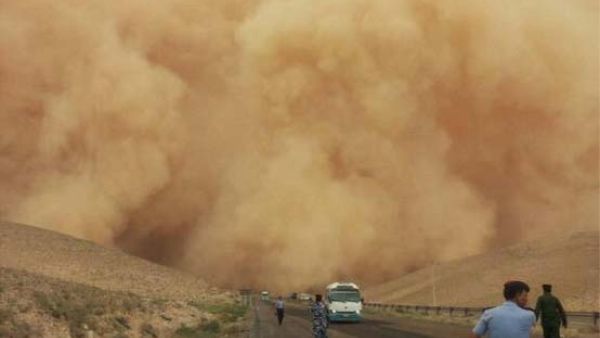Residents all across the Middle East are feeling the heat wave as it slams the region with nearly record-breaking temperatures. For Jordan, the hot weather means intense sandstorms — and Syrian refugees are feeling the impact.
Strong winds across the desert blew sand throughout the country. Flights were rerouted to Israel for emergency stops, businesses kept their doors closed. But most striking were the photos and videos uploaded on social media that captured the Zaatari refugee camp smothered by clouds of sand.
Syrian refugee camp, Zaatari camp, in Jordan was hit by a sand storm. pic.twitter.com/8PgK2xQhR0
— Rami (@RamiSafadi93) August 2, 2015#Zaatari refugee camp under the influence of the sand storm , photos published on @AlghadNews @Refugees pic.twitter.com/e8dV4AK4w5
— Lara M. Ayoub (@larayoub) August 2, 2015Pics from #Zaatari_camp pic.twitter.com/4eHVGzqcTT
— Hamza Haj (@7amza7aj) August 2, 2015Of course, Jordan's not the only country that's been impacted by the heat wave. Iran this week felt temperatures as high as 165 degrees Fahrenheit (72 Celsius). Iraq called a four-day public holiday from the sweltering 50 Celsius. But nothing is quite so tangible as photos of a sweltering duststorm.
Here's an explanation for those wondering about how hot temperatures lead to sandstorms. Heat waves create convection currents when hot air rises and moves to the waters.

Once it cools down, it swoops back onto land again — and in a desert climate like Jordan, that means strong gusts of wind.
By Hayat Norimine







